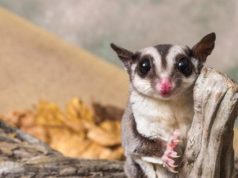In the wild, animals have instincts that dictate many aspects of their lives to ensure that they survive. They have evolved over millennia with certain traits that suit their needs to live in the harsh natural world. However, these animals win the prize for the craziest things done to survive in the “eat or be eaten” world.
The Pearlfish: This fish finds shelter in a sea cucumber’s anus. It waits for its victim to breathe (yes, sea cucumbers breathe through the wrong end) and just shimmies right in. Sometimes they go up in pairs and, scientists suspect, have sex inside. If that weren’t bad enough, the pearlfish may also eat its host’s gonads.
The Antechinus: The male antechinus, a shrew-like marsupial, mates so frantically with as many females as possible over a three week period that he goes blind, bleeds internally, and drops dead. The upside to this is that his seed is spread far and wide and he can RIP knowing that he has done his part to ensure the survival of his species.
The Hairy Frog and Spanish Ribbed Newt: These two are listed together because they both break their own bones when the feel threatened. The hairy frog breaks its own toe bones and shoves them through its feet to create sharp claws whenever it feels threatened. The Spanish ribbed newt shoves its ribs through its chest to ward off predators. Fortunately for them, newts are known for quick healing skin.
The French Guinea Termite: A certain species of French Guinea termite will self-destruct should the colony come under attack. They accumulate toxins in a gland on their back over the course of their lives. Eventually, should the colony come under attack, the older termites that are loaded with toxins will blow themselves up near the colony’s attackers.
The Clown Loach: This fish is a popular addition to many freshwater aquariums but they should not be underestimated. Hidden below their eyes are retractable spines that they can shoot out to stab would-be predators.
The Diving Bell Spider: This fascinating species is the only spider that can effectively live under water. It creates a bubble-like web that traps oxygen and researchers say they only need to come up once a day.
The Mimic Octopus: Probably one of the coolest “tricks” in nature, this cephalopod can take on characteristics of up to 15 different forms of marine life. With that resume, it is the wild’s best copycat to date.
Crazy as these things may seem, these survival tactics are nothing short of evolutionary genius.











